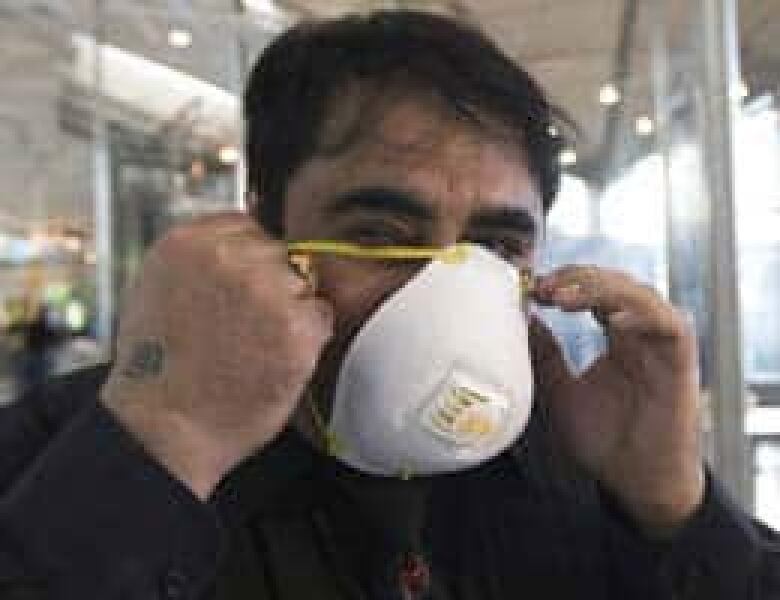Will face masks protect you from the flu?
In the aftermath of the SARS outbreak in 2003, the Public Health Agency of Canada asked a panel of medical experts for guidance on how flu is transmitted and how best to protect against infection.

The report was produced by the Council of Canadian Academies, chaired by Dr. Donald Low, microbiologist in chief at Mount Sinai Hospital in Toronto.
One of the questions the panel considered was whether face masks would offer protection in the event of a pandemic.
The verdict: yes, to an extent.
The report says a face mask or personal protective respiratory equipment is the final layer of protection when exposure to an infected person is required, or unavoidable. The primary elements of protection are "engineering and administrative controls."
Engineering controls include physical controls such as ventilation requirements in buildings, and relative humidity and temperature controls. Administrative controls are measures that individuals handle, such as handwashing, covering your mouth when you sneeze or cough or seeking medical care when you're sick.
A protective mask, the report says, can offer protection, but there's no evidence inexpensive surgical masks can protect against flu virus particles small enough to be inhaled into the lower respiratory tract or the lungs. The report also finds that it's unclear how effective surgical masks are in blocking flu virus particles that are bigger and therefore likely to settle in the nose and throat of an exposed person.
Not all masks are created equally, either. Surgical masks the kind your dental hygienist might use while inflicting a cleaning on you offer some help, but they won't filter out smaller particles and don't provide a good seal.
If you're in the market for a mask, don't go to the hardware store and pick up one that you'd use while sanding drywall. Covering your mouth and nose with a bandana won't do you much good either.
The best bet for protective masks are what are referred to as "N95 respirators," a commonly used term in Canada that refers to NIOSH-certified, disposable, particulate-filtering, half-facepiece respirators.
Not all high-quality masks are labeled N95. Health Canada said masks should offer protection equivalent to N95 to be considered effective. Such masks should:
- Filter particles one micron in size or smaller.
- Have a 95 per cent filter efficiency.
- Provide a tight facial seal (less than 10% leak).
CBC News Marketplace tested three types of N95 masks in the wake of the SARS outbreak in 2003. Each filtered out between 97 per cent and 99.7 per cent of all the virus-like particles.
The report prepared for the Public Health Agency of Canada further concluded that:
- N95 respirators protect against the inhalation of nasopharyngeal, tracheobronchial and alveolar sized particles.
- Surgical masks worn by an infected person may play a role in the prevention of influenza transmission by reducing the amount of infectious material that is expelled into the environment.
- Both surgical masks and N95 respirators offer a physical barrier to contact with contaminated hands and ballistic trajectory particles, such as particles expelled by a sneeze or a cough.
- The efficiency of the filters of surgical masks to block penetration of alveolar and tracheobronchial sized particles is highly variable. When combined with the inability to ensure a sealed fit, these factors suggest that surgical masks offer no significant protection against the inhalation of alveolar and tracheobronchial sized particles.
Health officials say masks can help, but unless the person wearing the mask can ensure a sealed fit, the mask will offer no significant protection. This can be more of a problem for children or men with beards.












_(720p).jpg)


 OFFICIAL HD MUSIC VIDEO.jpg)
.jpg)



























































































